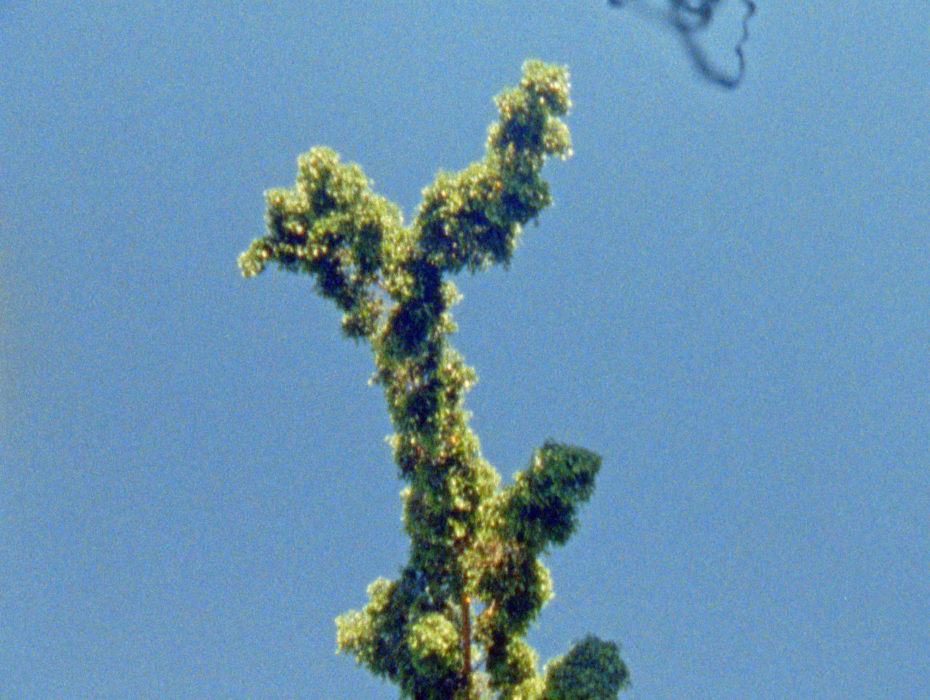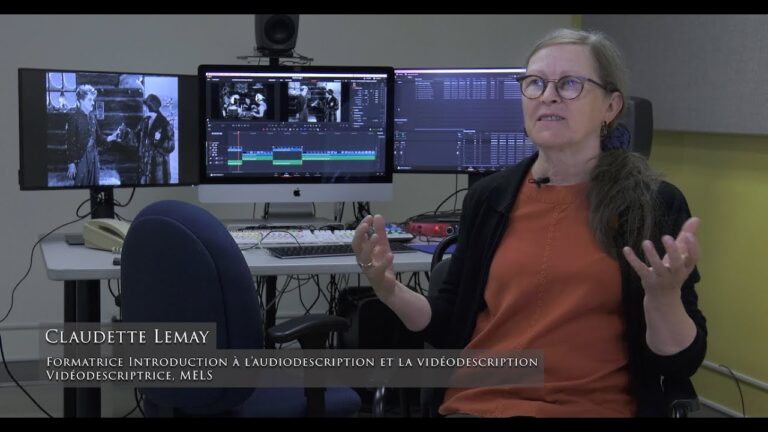The filmmaker and cultural worker Nour Ouayda presented two of her short films at the Université de Montréal in December.

Olivier Du Ruisseau
Since completing her master's degree in cinema at the Université de Montréal (2017), filmmaker and cultural worker Nour Ouayda has directed five short films. She has also worked as a programmer for a number of organizations, and is a member of the editorial committee of Hors Champ magazine. On the occasion of the screening of two of her films at the Université de Montréal last December she agreed to discuss her career and her exploration of the concept dérive (drifting) in cinema.
The event, entitled “Au-delà du détail,” was part of the series Au-delà des frontières, organised by the researchers Xaira Zarza and Claudia Polledri and presented jointly with the Groupe de recherche sur l’avènement et la formation des identités médiatiques (GRAFIM) and the cinEXmedia partnership. The screening of the films One Sea, 10 Seas (2019) and The Secret Garden (2023) was followed by a discussion moderated by the former supervisor for the filmmaker’s master’s degree, André Habib, who is a member of cinEXmedia and editor in chief of Hors Champ.
It was in fact while working on her master’s degree in research-creation that Ouayda developed her practice around the dérive, inspired by the concept of Guy Debord and the Situationists, filming places the way Debord said they should be experienced, by letting one be guided by one’s subjective impressions while walking and adapting to events as they occur on the ground. In One Sea, 10 Seas, she thought about this process directly by joining texts with close-up images of the sea at Beirut, filmed with her father’s MiniDV camera.
“It’s thanks to this camera that I began filming, without having a precise project in mind,” Ouayda relates. “It was almost as though the idea of dérive came to me there, meaning to film images without a goal, bit by bit. It was while walking that I accumulated them. I found details or textures that interested me and I isolated them in close-up, often using a zoom.”
This is why we barely recognise the city of Beirut in One Sea, 10 Seas, even though the film was shot in famous places in the city, such as Corniche Beirut, a seaside promenade. “This is also connected to the idea of deterritorialisation in the work of Gilles Deleuze and Félix Guattari. Beirut is a place that always demands wide-angle shots. Filming the city this way becomes a way of decontextualising it, of wresting it from the typical image imposed on it and getting closer to the place itself, its materiality and its elements. That sets the imagination working.”
“Surgissements”
Nour Ouayda explains that she is still inspired today by the Situationists’ definition of a dérive, which corresponds to “being available to the enticements of the situation.” “Being available is tied up with the body, the mind and the camera,” she remarks. “It does not come on its own. You have to put things in place to support this availability. And to receive enticements, it is enough to look, to listen and to be available. Things are there and reveal themselves to us. It is a moment of magical spontaneity, as Henri Michaux would say.”

A surgissement (“sudden appearance”) is “the point of convergence between availability, enticements and the camera.” “Today this word speaks to me more than dérive,” she adds. “Surgissement is why I make films. In One Sea, 10 Seas I explored this convergence in a process of becoming aware of and formulating this convergence. Now what interests me most is how associating a word with an image and a sound can bring about a moment of magic.”
This kind of association is at the heart of The Secret Garden, Ouayda’s most recent film, and her second collaboration with Carine Doumit (co-writer and editor of both films), in which two women, using texts, recount the mysterious appearance – in other words the surgissement – of trees and plants in their town. This film was selected to screen at the prestigious Copenhagen International Documentary Film Festival (CPH:DOX), the Cinéma du réel festival in Paris and the Montreal International Documentary Festival.
Programming and Writing
Nour Ouayda’s programming work has also been presented at several institutions, including the Metropolis Cinema in Beirut, where she was in charge of the Cinematheque Beirut project, and at the Cinémathèque québécoise, where she contributed to the retrospective of the films of Kamal Aljafari, Ghassan Salhab and Jocelyne Saab.
“In my connection with programming and writing I explore the idea of the dérive,” she remarks. “Hors Champ enabled me to develop a kind of writing on and around cinema which takes into account our experience of it, particularly in a movie theatre. Whether it is day or night when we leave the theatre, whether I fell asleep or not during the screening, or even the condition of the print: these are all elements that can be the topic of a text. This idea also applies to programming. When I program, I take into account several aspects of the experience of the film, not just the film itself.”
After spending a little more than two years in Montreal, her birthplace, for her master’s degree, Nour Ouayda lived and worked for several years in Beirut. Having now left her position at the Metropolis Cinema, she devotes herself to writing and programming independently while preparing her next films.

